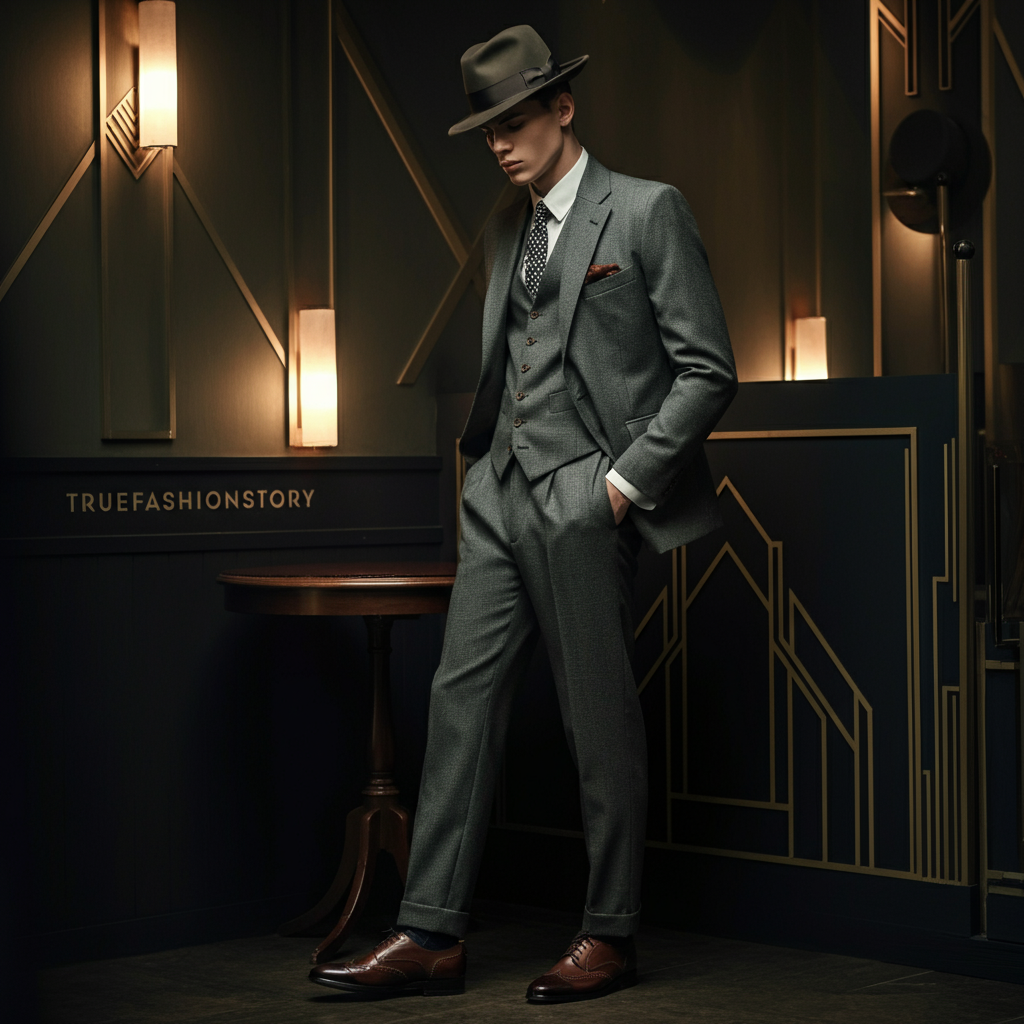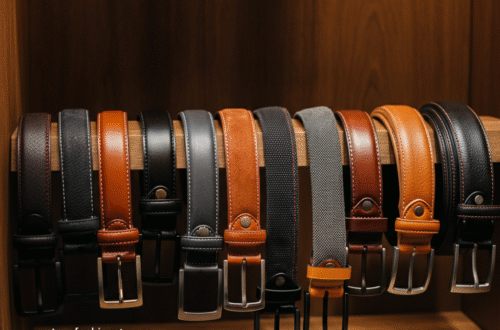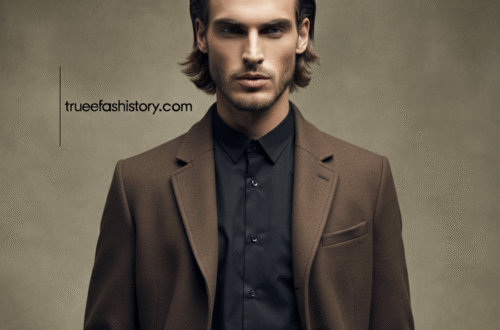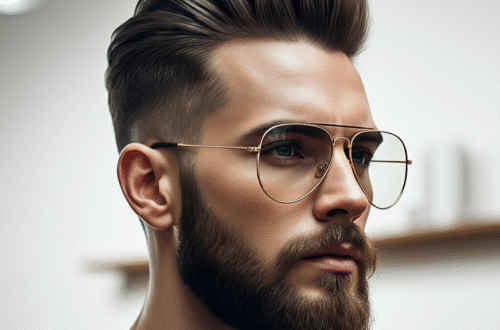The roaring twenties brought us jazz music, prohibition speakeasies, and some of the most iconic men’s fashion in history. If you’re looking to capture that timeless elegance and sophisticated charm, understanding 20s style men’s fashion is your gateway to a wardrobe that screams class and refinement.
This decade marked a revolutionary shift in men’s clothing, moving away from the rigid Victorian era toward more relaxed yet polished looks. From sharp three-piece suits to distinctive accessories, the 1920s created fashion templates that remain influential today. Whether you’re planning a themed party, seeking vintage inspiration, or simply want to add some classic flair to your wardrobe, this comprehensive guide will walk you through everything you need to know about achieving that perfect Jazz Age aesthetic.
The Historical Context of 1920s Men’s Fashion
The 1920s represented a complete transformation in American society, and men’s fashion reflected this cultural shift. Post-World War I prosperity created a new class of wealthy businessmen who demanded clothing that was both practical and stylish. The 20s style men’s fashion emerged as a response to changing lifestyles, where men needed versatile outfits for work, social gatherings, and the growing leisure culture.
During this era, fashion became more democratized. Ready-to-wear clothing became widely available, making stylish attire accessible to middle-class men for the first time. Department stores began offering complete wardrobes, and fashion magazines started targeting male consumers. This shift created standardized sizing and mass production techniques that revolutionized how men approached their personal style.
The influence of Hollywood also cannot be understated. Silent film stars like Rudolph Valentino and Douglas Fairbanks became style icons, popularizing specific looks that men across America tried to emulate. Their on-screen personas helped establish the sophisticated gentleman archetype that defined the decade’s fashion sensibilities.
Essential Elements of 20s Style Men’s Fashion
The Foundation: Three-Piece Suits
The cornerstone of 20s style men’s fashion was undoubtedly the three-piece suit. Unlike modern suits, these featured distinctive characteristics that set them apart. The jackets were typically longer, reaching mid-thigh, with a more relaxed fit through the torso. The waistcoats (vests) were essential components, often featuring contrasting colors or patterns that added visual interest to the overall ensemble.
High-waisted trousers were another defining feature, sitting well above the natural waistline and creating a longer leg line. These pants were wider through the leg, tapering slightly toward the ankle, and were almost always worn with suspenders rather than belts. The overall silhouette emphasized a masculine, authoritative appearance that projected success and sophistication.
Quality fabrics dominated the era, with wool being the preferred material for most occasions. Pinstripes, subtle checks, and solid colors in navy, charcoal, and brown were the most popular choices. The attention to detail in construction and tailoring was exceptional, with hand-finished seams and custom-fitted garments being the gold standard for well-dressed gentlemen.
Shirts and Collars That Defined the Decade
Dress shirts in the 1920s featured high, stiff collars that required collar studs and remained separate from the shirt body. White was the predominant color, though light blue and subtle stripes occasionally appeared. The shirts themselves were cut fuller through the body to accommodate the high-waisted trouser style and provide comfort when tucked in properly.
Different collar styles served various purposes throughout the decade. Wing collars were reserved for formal evening wear, while turndown collars became standard for daytime business attire. The height and stiffness of these collars required specific care and maintenance, contributing to the overall polished appearance that characterized 20s style men’s fashion.
French cuffs were standard on quality dress shirts, requiring cufflinks as both functional and decorative elements. These details elevated even basic shirts into sophisticated wardrobe pieces worthy of the era’s fashion standards.
Color Palettes and Patterns of the Era
Classic Color Schemes
The 1920s favored a sophisticated yet restrained color palette that emphasized elegance over flash. Navy blue dominated business attire, providing a versatile foundation that worked for both day and evening occasions. Charcoal gray offered a slightly less formal alternative while maintaining the era’s preference for darker, authoritative colors.
Brown suits gained popularity during the mid-1920s, particularly in lighter shades that worked well for daytime social events and weekend activities. These warmer tones reflected the decade’s growing emphasis on leisure and relaxation outside the workplace.
For evening wear, black remained the ultimate choice for formal occasions. Tuxedos and tailcoats in deep black created the sophisticated silhouettes associated with Jazz Age nightlife and high society gatherings.
Popular Patterns and Textures
Pinstripes became synonymous with 20s style men’s fashion, appearing in various widths and spacings. Subtle chalk stripes on dark backgrounds created visual interest without being overly bold. These patterns helped elongate the silhouette while maintaining the conservative aesthetic preferred by businessmen and society gentlemen.
Subtle checks and windowpane patterns appeared on both suits and accessories, providing texture and visual depth to outfits. Herringbone weaves added sophistication to casual jackets and overcoats, while solid fabrics with interesting textures like flannel and tweed provided variety within the era’s refined color palette.
The key to successful pattern mixing lay in maintaining tonal harmony and scale variation, ensuring that different patterns complemented rather than competed with each other.
Accessories That Made the Look Complete
Hats: The Crowning Glory
No discussion of 20s style men’s fashion would be complete without addressing the central role of hats. Every well-dressed gentleman owned multiple hats for different occasions and seasons. The fedora emerged as the most versatile choice, suitable for business and casual wear alike.
Bowler hats maintained their popularity from previous decades, particularly among older, conservative businessmen. These rounded-crown hats projected authority and respectability, making them ideal for formal business meetings and traditional social gatherings.
For summer months, boater hats provided both style and practicality. Made from straw with contrasting ribbon bands, these lightweight options kept gentlemen cool while maintaining their polished appearance during outdoor activities and warm-weather social events.
Footwear Fundamentals
Oxford shoes dominated formal occasions, featuring closed lacing systems and sleek profiles that complemented the era’s tailored aesthetic. Black patent leather was reserved for evening wear, while brown leather provided versatility for daytime activities.
Two-tone spectator shoes became increasingly popular throughout the decade, particularly for golf and other leisure activities. These distinctive shoes featured contrasting leather colors, typically white with black or brown accents, creating visual interest while maintaining the sophisticated appearance expected in 20s style men’s fashion.
Spats offered an additional layer of refinement, covering the ankle area and creating a seamless transition between trouser and shoe. These accessories were particularly popular with fashion-forward gentlemen who wanted to distinguish themselves from more conservative dressers.
Formal Wear and Evening Attire
White Tie Excellence
The pinnacle of formal 20s style men’s fashion was the white tie ensemble, reserved for the most prestigious social events. This ultra-formal option consisted of a black tailcoat with matching trousers featuring satin side stripes, a white wing-collar shirt, white bow tie, and white waistcoat.
The tailcoat’s distinctive cut created an elegant silhouette that emphasized the wearer’s stature and sophistication. Proper fit was crucial, with the coat’s tails reaching just below the knee and the front opening revealing the pristine white waistcoat underneath.
Accessories for white tie events included white gloves, a top hat, and an opera cape for outdoor wear. These elements combined to create the ultimate expression of formal elegance that epitomized high society during the Jazz Age.
Black Tie Sophistication
Black tie represented a slightly less formal but equally elegant option for evening social events. The classic dinner jacket (tuxedo) featured satin or grosgrain lapels and matching side stripes on the trousers. A white wing-collar or turndown-collar shirt accompanied by a black bow tie completed the essential elements.
The smoking jacket offered a more relaxed alternative for private gatherings and intimate dinner parties. These velvet or silk jackets, often featuring contrasting lapels and decorative braiding, provided comfort while maintaining the sophisticated appearance expected in refined social circles.
Cufflinks, shirt studs, and pocket watches served as both functional necessities and opportunities for personal expression within the formal dress code parameters.
Casual and Leisure Wear Options
Weekend Wardrobe Essentials
The growing emphasis on leisure during the 1920s created new categories within 20s style men’s fashion. Sports jackets in tweeds and other textured fabrics provided stylish alternatives to formal business suits for weekend activities and informal social gatherings.
Knit sweaters gained popularity as comfortable yet presentable options for golf, tennis, and other recreational activities. V-neck styles worn over dress shirts created layered looks that maintained sophistication while offering practical comfort for active pursuits.
Plus-fours (knickerbockers) became synonymous with golf attire, featuring knee-length trousers worn with high socks and two-tone shoes. These distinctive garments allowed for freedom of movement while maintaining the polished appearance expected even during recreational activities.
Seasonal Considerations
Summer wardrobes required lighter fabrics and colors while maintaining the era’s emphasis on proper dress. Linen suits in light gray or cream provided comfort during hot weather, though they required careful maintenance to prevent excessive wrinkling.
Seersucker fabrics offered another warm-weather alternative, with their distinctive puckered texture providing air circulation while maintaining a neat appearance. These suits were particularly popular in southern climates and during vacation travel.
Winter clothing emphasized layering and quality outerwear. Heavy wool overcoats with fur collars provided warmth and style, while cashmere scarves and leather gloves added both comfort and elegance to cold-weather ensembles.
Grooming and Personal Care Standards
Hair and Facial Hair Trends
Grooming standards were exceptionally high during the 1920s, with 20s style men’s fashion extending beyond clothing to encompass overall personal presentation. Hair was typically worn shorter and slicked back with pomade, creating smooth, controlled styles that complemented the era’s polished aesthetic.
The side part became the dominant hairstyle, with hair combed neatly to one side and held in place with hair products. This look projected professionalism and attention to detail that aligned with the decade’s business-oriented culture.
Facial hair trends favored clean-shaven faces or carefully maintained mustaches. Full beards were largely out of fashion, as the smooth, youthful appearance better suited the era’s modern sensibilities and clothing styles.
Fragrance and Personal Products
Cologne and aftershave became essential elements of daily grooming routines. Bay rum and citrus-based fragrances were particularly popular, providing fresh, clean scents that complemented rather than overwhelmed the wearer’s personal space.
Quality shaving equipment, including straight razors and badger-hair brushes, were investments that reflected a gentleman’s commitment to proper grooming standards. The daily shaving ritual became an important part of preparing for professional and social engagements.
Manicured nails and proper dental hygiene completed the grooming requirements for well-dressed gentlemen, as attention to these details separated truly refined individuals from those merely following fashion trends.
Modern Adaptations of 1920s Style
Incorporating Vintage Elements Today
Contemporary fashion enthusiasts can successfully integrate 20s style men’s fashion elements into modern wardrobes without appearing costume-like. The key lies in selecting specific pieces that capture the era’s essence while maintaining wearability in today’s casual environment.
High-waisted trousers with suspenders create an authentic 1920s silhouette that works well for formal occasions and vintage-themed events. Pairing these with modern dress shirts and contemporary accessories creates a balanced look that honors the past while remaining current.
Three-piece suits in classic colors and cuts provide timeless elegance suitable for weddings, business meetings, and special occasions. Modern tailoring techniques can adapt the era’s proportions to flatter contemporary body types while maintaining the sophisticated appearance that defined the decade.
Shopping for Authentic Pieces
Vintage clothing stores and specialized retailers offer authentic 1920s pieces for serious collectors and enthusiasts. However, these items often require significant investment and careful maintenance due to their age and rarity. As noted by fashion historians at truefashionstory.com, authentic vintage pieces should be professionally cleaned and stored to preserve their historical value.
Reproduction clothing provides more accessible alternatives for those wanting to achieve authentic 1920s looks. Many manufacturers specialize in period-accurate reproductions using modern construction techniques and sizing, making these pieces more practical for regular wear.
Custom tailoring offers the ultimate solution for achieving perfect 20s style men’s fashion fits. Working with experienced tailors who understand period proportions and construction methods ensures authentic results tailored to individual measurements and preferences.
Comparison Table: 1920s vs. Modern Men’s Fashion
|
Element |
1920s Style |
Modern Equivalent |
Key Differences |
|---|---|---|---|
|
Suit Jackets |
Longer length, relaxed fit, natural shoulders |
Shorter, fitted, structured shoulders |
Length and silhouette emphasis |
|
Trousers |
High-waisted, wide leg, suspenders |
Low-rise, slim fit, belts |
Rise height and leg shape |
|
Shirts |
Detachable collars, French cuffs, fuller cut |
Attached collars, button cuffs, fitted |
Construction and formality level |
|
Footwear |
Oxfords, spectators, spats |
Sneakers, loafers, boots |
Formality and decoration |
|
Accessories |
Hats essential, pocket watches, suspenders |
Optional hats, smartphones, belts |
Necessity vs. choice |
|
Colors |
Navy, charcoal, brown, white |
Broader palette including pastels |
Conservative vs. expressive |
Key Takeaways for Mastering 20s Style Men’s Fashion
Understanding 20s style men’s fashion requires appreciating the era’s emphasis on craftsmanship, attention to detail, and sophisticated presentation. The decade’s clothing reflected broader cultural values of prosperity, refinement, and social mobility through personal appearance.
Quality always trumped quantity in 1920s wardrobes, with well-dressed gentlemen investing in fewer, better-made pieces that lasted for years. This philosophy remains relevant today, as timeless styles and superior construction provide better long-term value than trendy, disposable fashion.
The importance of proper fit cannot be overstated when recreating authentic 1920s looks. Period proportions differed significantly from contemporary cuts, requiring understanding of how high-waisted trousers, longer jackets, and structured accessories worked together to create the era’s distinctive silhouette.
Accessories made the difference between good and great 1920s style. Hats, pocket squares, cufflinks, and proper footwear elevated basic outfits into sophisticated ensembles that conveyed social status and personal refinement.
Modern adaptations work best when they capture the spirit rather than exact replicas of 1920s fashion. Incorporating key elements like three-piece suits, high-quality fabrics, and classic color palettes creates authentic feels without appearing costume-like in contemporary settings.
Frequently Asked Questions
What are the most essential pieces for creating a 1920s-inspired wardrobe?
Start with a well-fitted three-piece suit in navy or charcoal, high-waisted trousers with suspenders, quality dress shirts with French cuffs, Oxford shoes, and a classic fedora. These foundation pieces provide the basis for authentic 20s style men’s fashion looks.
How can I incorporate 1920s elements without looking like I’m in costume?
Focus on subtle details like high-waisted trousers, suspenders, pocket squares, and classic color combinations. Avoid obvious period pieces like boater hats or spats for everyday wear, instead choosing timeless elements that enhance modern outfits.
What colors were most popular in 1920s men’s fashion?
Navy blue, charcoal gray, and various shades of brown dominated the palette. White shirts were standard, with black reserved for formal evening wear. The era favored conservative, sophisticated colors over bold or bright options.
Are reproduction 1920s clothes worth buying?
High-quality reproductions offer excellent value for those wanting authentic looks without vintage prices. Look for manufacturers who pay attention to period-accurate details like proper proportions, fabric choices, and construction methods.
How important were accessories in 1920s men’s fashion?
Accessories were crucial for completing authentic looks and demonstrating social status. Hats were essential for outdoor wear, while cufflinks, pocket watches, and quality leather goods provided opportunities for personal expression within formal dress codes.
Conclusion
The timeless appeal of 20s style men’s fashion continues to inspire contemporary wardrobes nearly a century after the Jazz Age ended. The era’s emphasis on quality craftsmanship, sophisticated silhouettes, and attention to detail created fashion templates that remain relevant and stylish today.
Whether you’re looking to add vintage flair to your professional wardrobe, planning a themed event, or simply appreciating classic menswear, understanding the principles behind 1920s fashion provides valuable insights into creating distinguished, elegant looks.
The key to successfully incorporating these elements lies in respecting the era’s commitment to quality and refinement while adapting proportions and details to work within contemporary contexts. By focusing on the underlying principles rather than exact reproductions, modern gentlemen can capture the sophisticated spirit that made 20s style men’s fashion legendary.
Remember that true style transcends specific decades or trends. The 1920s taught us that investing in quality pieces, paying attention to fit and detail, and maintaining high grooming standards create lasting impressions that go far beyond surface-level fashion choices. These timeless lessons remain as valuable today as they were during the roaring twenties.





